Menghai Aged Ripe Pu-erh Tea | Best Tea For Weight Loss
Menghai Aged Ripe Pu-erh Tea | Best Tea For Weight Loss
Caffeine: Low
Flavor: Mellow\Floral
Infused with the Energy of Water – Calm, Detoxifying, and Nourishing
The Elements: 【🌊 Water】
Caffeine Level: Moderate
Benefits of the Tea:
- Promotes Calmness & Mental Clarity
- Supports Detoxification & Kidney Health
- Balances Emotions & Enhances Fluidity
Our Yunnan Menghai Aged Pu-erh Tea Head (Shou) 2008 is rich in intrinsic substances, ideal for boiling water infusion. The tea soup is bright, clear, and full-bodied, with a smooth, rich texture that endures many steeps.
Water Element Insight
- Organ: Kidney & Bladder
- Emotion: Calm, Fear, Fluidity
- Energy Direction: Downward, Cooling, Restorative
- When out of balance: Fear, Anxiety, Fluid Retention
This tea’s Water energy nurtures the kidneys, supports detoxification, and encourages emotional balance and tranquility.
Ingredients & Origin
- Ingredient: Aged Pu-erh Tea Nodules (Tea Heads)
- Origin: Menghai, Yunnan, China
- Harvest Year: 2008
Handcrafted and naturally fermented for deep, complex flavors that evolve over time.
How to Brew
Traditional Brew: 5g / 100°C / Rinse once / Steep 15–30 seconds / Increase steep time gradually
Modern Brew: 3g / 250ml / 95°C / Steep 3–5 minutes
Frequently Asked Questions
What are tea nodules (tea heads)?
- Tea nodules are dense clusters formed naturally during fermentation, rich in intrinsic substances that produce a robust, long-lasting brew.
How many times can this tea be re-steeped?
- This Pu-erh tea can withstand 6–10 infusions while maintaining flavor and aroma.
Is this tea suitable for aging?
- Yes. Properly stored, it continues to develop complexity and smoothness over years.
🌊 Embrace Water’s Flow – Savor the Calm Depths of Menghai Aged Pu-erh
Couldn't load pickup availability
Share
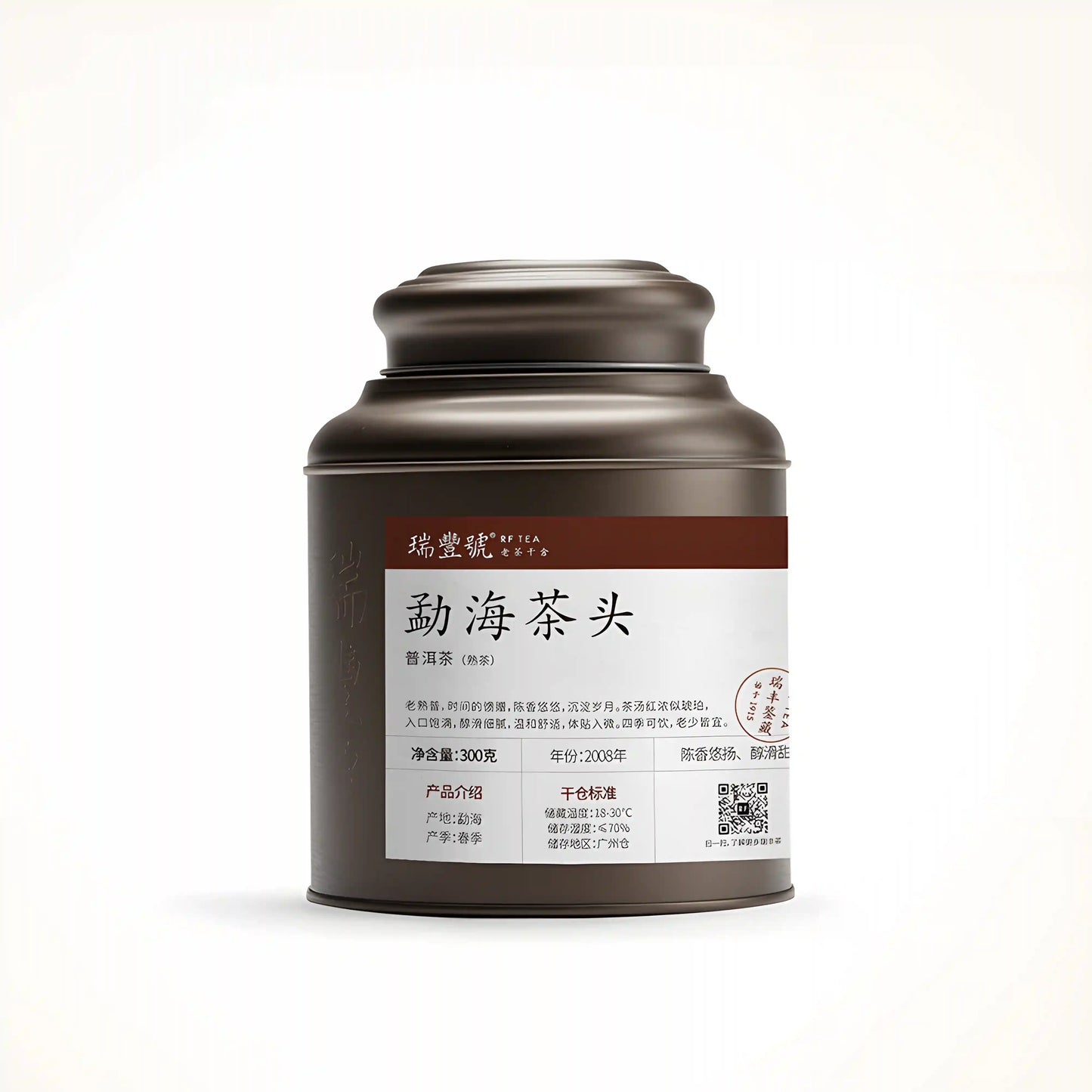
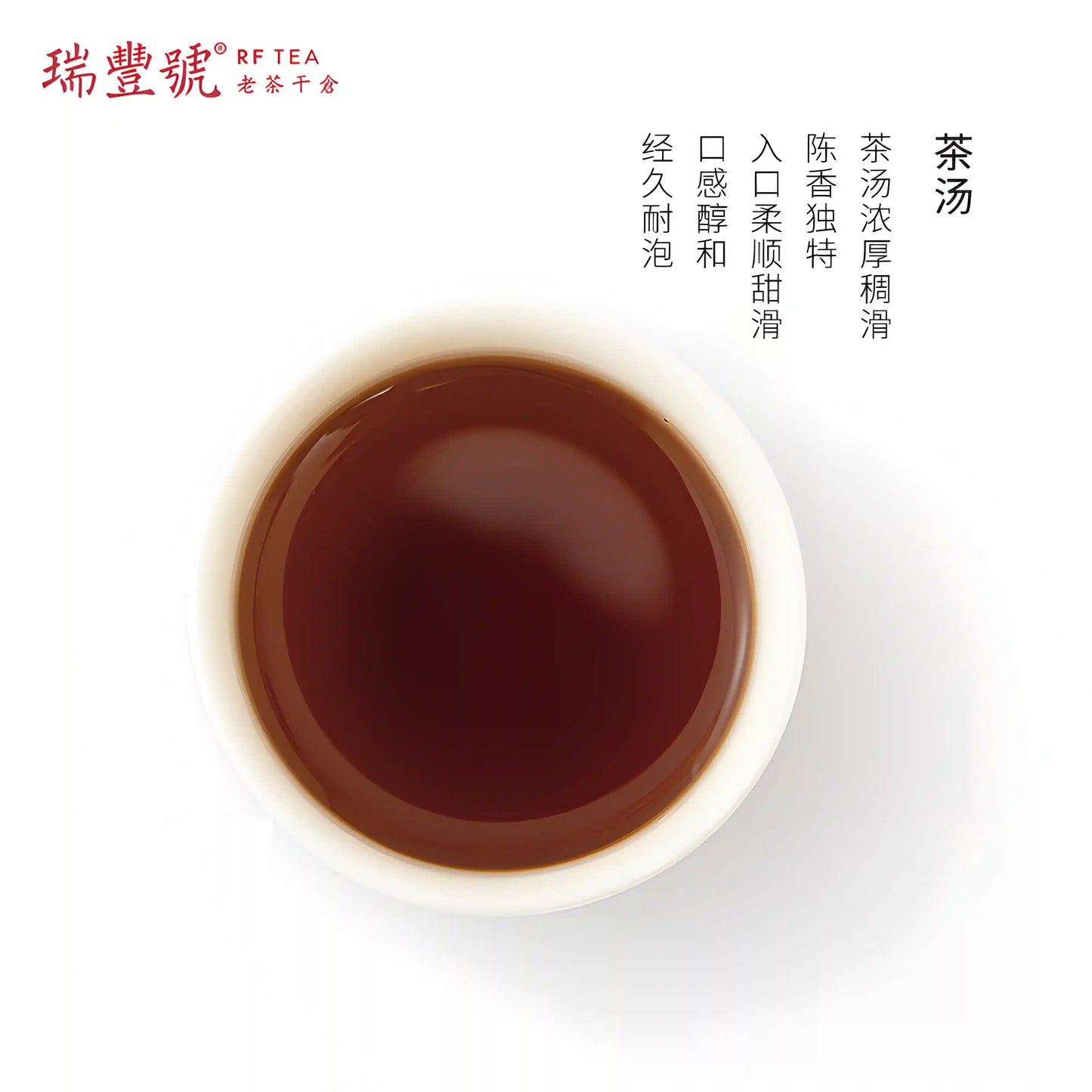
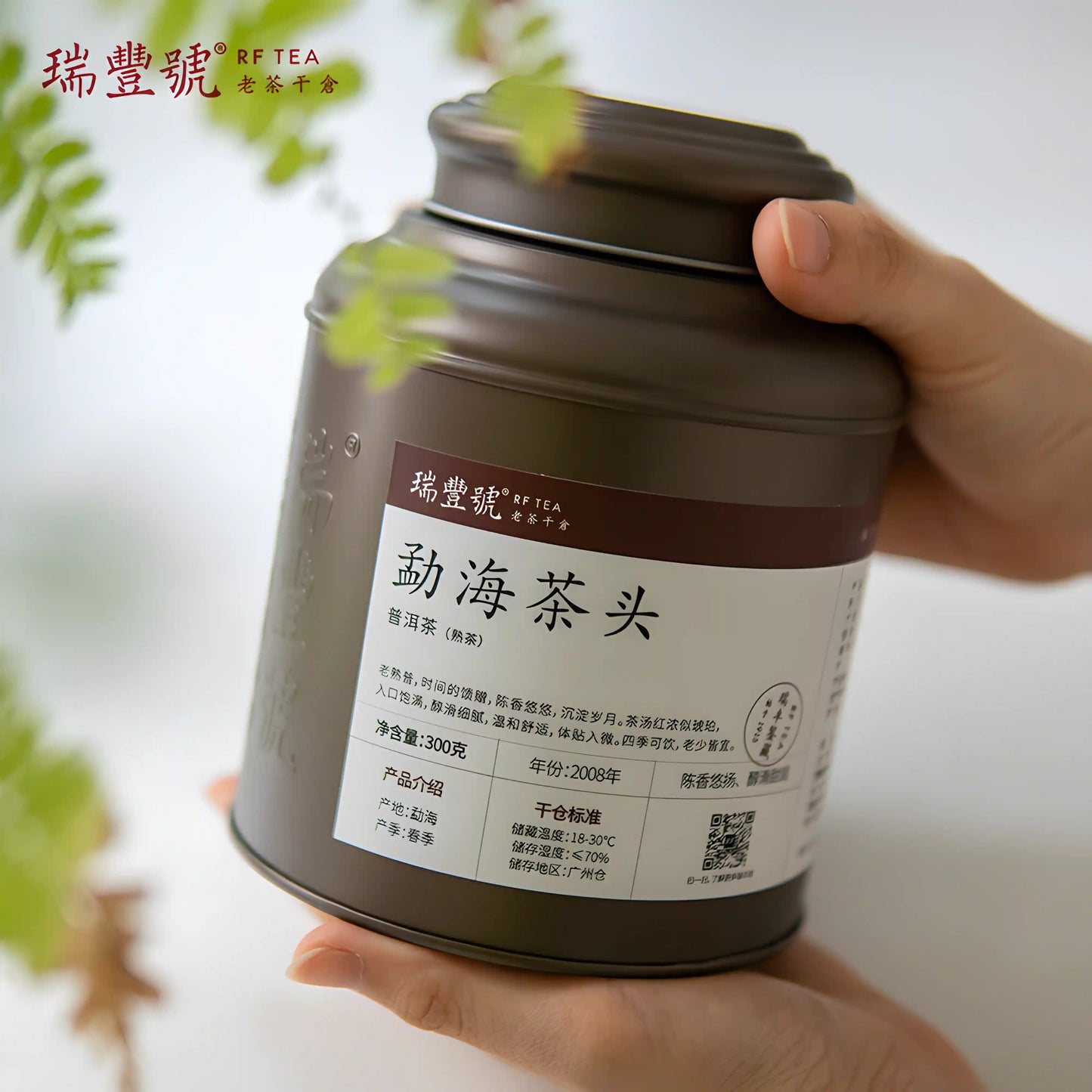
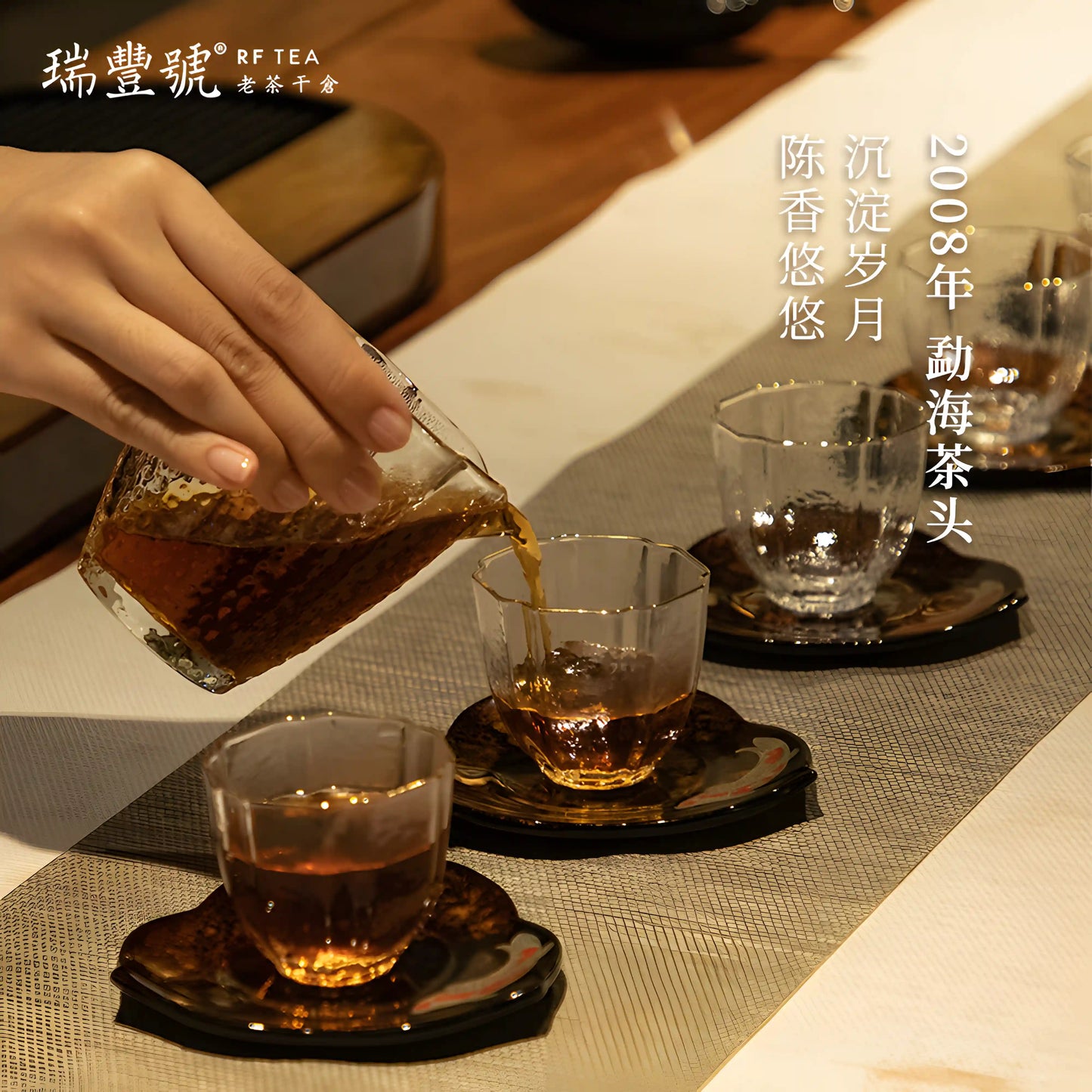
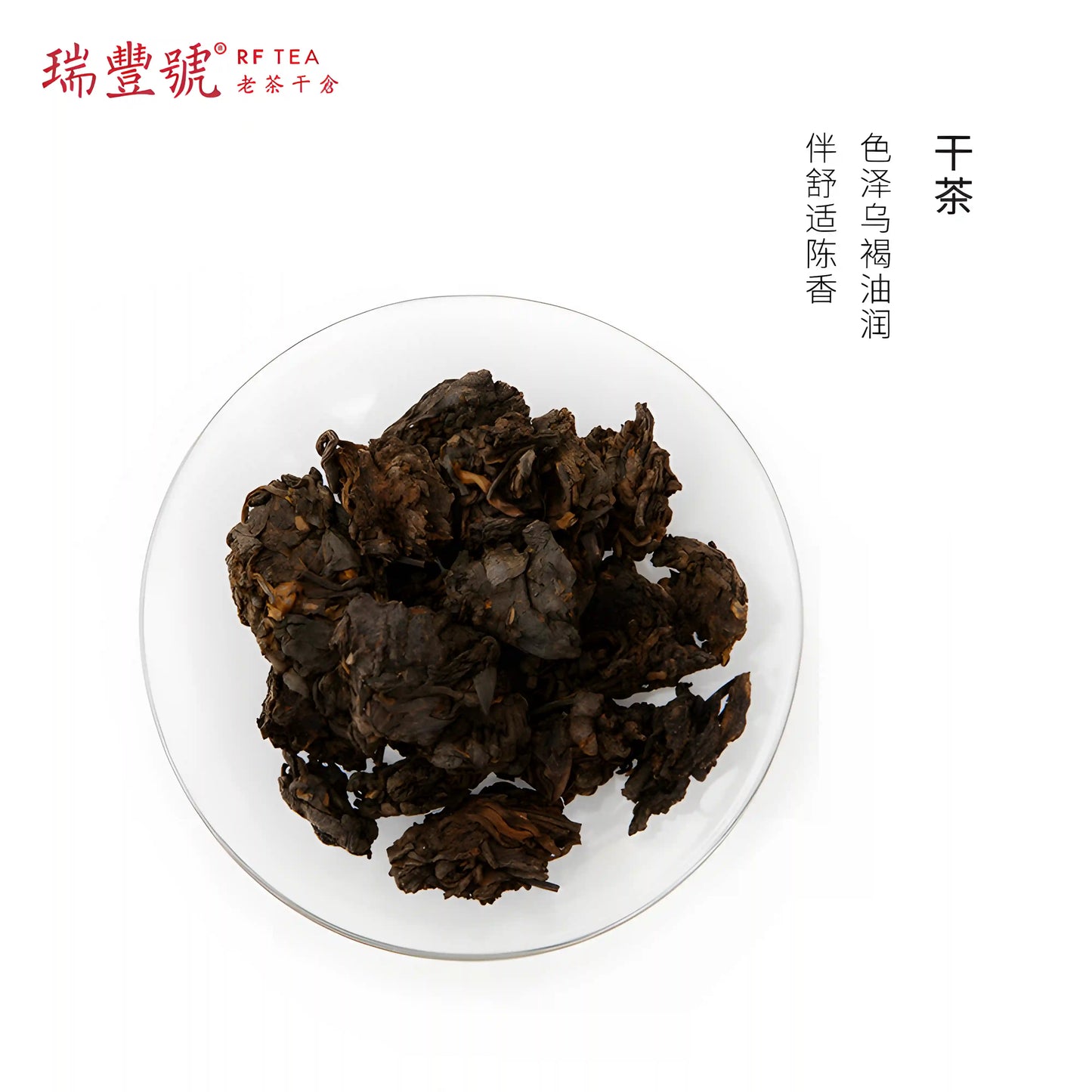
Blog posts
View all-

10/10 Would Recommend: The Healthy, Daily Ritua...
Discover why our Organic Rose Tea & Ceramic Mug Set is the Christmas gift she'll treasure daily. Featuring Xinjiang organic roses, premium Yunnan black tea, and authentic Ru Kiln ceramics,...
10/10 Would Recommend: The Healthy, Daily Ritua...
Discover why our Organic Rose Tea & Ceramic Mug Set is the Christmas gift she'll treasure daily. Featuring Xinjiang organic roses, premium Yunnan black tea, and authentic Ru Kiln ceramics,...
-

How to Store Pu-erh Tea: Aging Tips, Probiotic ...
Discover how to properly store Pu-erh tea (sheng & shou) to prevent spoilage and unlock its full aging potential. This guide covers humidity, ventilation, microbial benefits, and how Pu-erh evolves...
How to Store Pu-erh Tea: Aging Tips, Probiotic ...
Discover how to properly store Pu-erh tea (sheng & shou) to prevent spoilage and unlock its full aging potential. This guide covers humidity, ventilation, microbial benefits, and how Pu-erh evolves...
-

Raw vs. Ripe Pu-erh Tea: What’s the Difference?
Curious about the difference between Raw and Ripe Pu-erh? In this article, we explore their production methods, flavor profiles, fermentation process, and health benefits—plus real customer feedback to help you...
Raw vs. Ripe Pu-erh Tea: What’s the Difference?
Curious about the difference between Raw and Ripe Pu-erh? In this article, we explore their production methods, flavor profiles, fermentation process, and health benefits—plus real customer feedback to help you...








